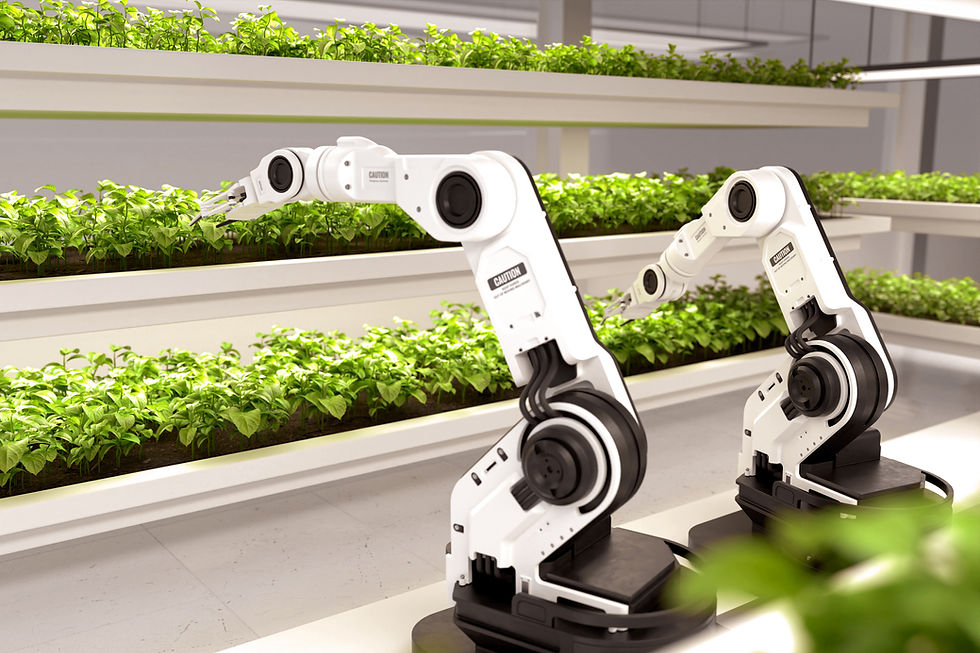How AI Is Transforming Everyday Life
- Anu Goel
- Jul 18
- 3 min read
Updated: Jul 20
Artificial Intelligence (AI) is rapidly transforming everyday life in 2025, making tasks easier, faster, and more personalized across nearly every aspect of society. Here are some of the most impactful ways AI is changing our daily routines:

Personal Assistants: AI-powered assistants like Siri, Alexa, and Google Assistant now handle complex tasks—scheduling, health tips, and even managing smart homes—using advanced natural language processing and machine learning.
Healthcare: AI improves medical diagnostics, analyzing images and patient data to detect diseases like cancer and diabetes more accurately and quickly. AI health apps also help track fitness, sleep, and mental well-being.
Customer Service: AI chatbots in banking, retail, and tech support resolve complex queries, offering instant, human-like responses and freeing up human agents for more specialized tasks.
Transportation: Self-driving cars use AI to interpret sensor data, make decisions, and safely navigate roads, promising safer and more efficient travel.
Education: AI-driven platforms personalize learning, adapting lessons to student needs and automating administrative work for teachers, making education more effective and accessible.
Content Creation: AI tools generate articles, videos, music, and art, helping creators and marketers work faster and with greater creativity.
Finance: Robo-advisors and AI-powered apps help manage investments, detect fraud, and optimize personal finance, making money management smarter and more secure.
E-commerce: AI analyzes browsing and purchase history to recommend products, personalize shopping experiences, and optimize pricing, boosting both convenience and sales.
Home & Lifestyle: Smart devices like thermostats, security systems, and even robot vacuum cleaners use AI to learn user preferences and automate daily routines, increasing comfort and efficiency.
Security: Facial recognition and AI-driven cybersecurity tools protect devices and data, identifying threats and preventing fraud in real time.
Sustainability: AI helps monitor environmental changes, optimize energy use, and reduce waste, playing a key role in fighting climate change and supporting eco-friendly practices.
Language & Communication: Real-time AI translation tools break down language barriers, making travel, business, and global communication easier.
Mental Health: AI-powered apps offer personalized support, coping strategies, and even real-time therapeutic advice, making mental health resources more accessible.
AI is now woven into the fabric of daily life, quietly powering the tools and services we rely on—often without us even noticing. As these technologies continue to evolve, their influence will only grow, shaping a smarter, more connected, and more efficient world.

You can leverage AI tools to enhance your creativity and content creation by integrating them into every stage of your process—from brainstorming to publishing. Here’s how:
Idea Generation & Brainstorming: Use AI-powered platforms like HubSpot’s Blog Ideas Generator, Jasper, or ChatGPT to spark new content ideas and overcome writer’s block. These tools analyze trends and keywords, providing fresh angles and topics tailored to your audience.
Automated Research: AI tools can quickly gather, summarize, and analyze large amounts of information, saving you and uncovering insights you might miss. This allows you to focus on creative storytelling instead of manual research.
Content Personalization: AI analyzes audience preferences and behaviors, helping you tailor content for maximum engagement. You can use this data to write articles, create visuals, or even schedule posts at optimal times.
Writing & Editing Assistance: Tools like Grammarly and Hemingway offer real-time grammar, tone, and style suggestions, making your writing clearer and more compelling. AI can also help maintain a consistent brand voice across different formats.
Visual & Multimedia Creation: Platforms like Canva and Lumen5 use AI to generate graphics, suggest layouts, and even create videos, allowing you to enhance your written content with engaging visuals.
Content Curation: AI-driven tools such as Feedly or Curata aggregate and recommend relevant content from across the web, helping you stay updated and share valuable resources with your audience.
SEO Optimization: AI tools like Surfer SEO and SEMrush analyze keywords and content performance, guiding you to create articles that rank higher in search results.
Workflow Automation: Automate repetitive tasks—like formatting, scheduling, and basic drafting—so you can devote more energy to creative and strategic work.
“The key is to combine AI’s computational power with human creativity and insight, fostering a dynamic, innovative approach to content creation that resonates with audiences and drives engagement.”
To maximize results, use AI as a creative partner—let it handle the routine and analytical tasks, while you focus on injecting your unique voice and perspective into every piece of content.




Comments